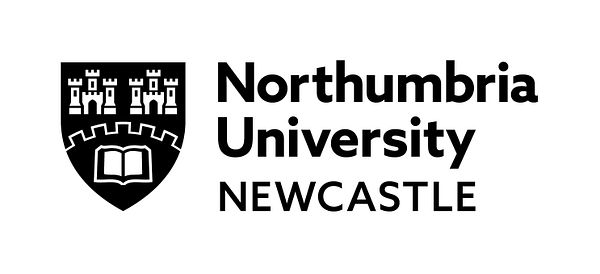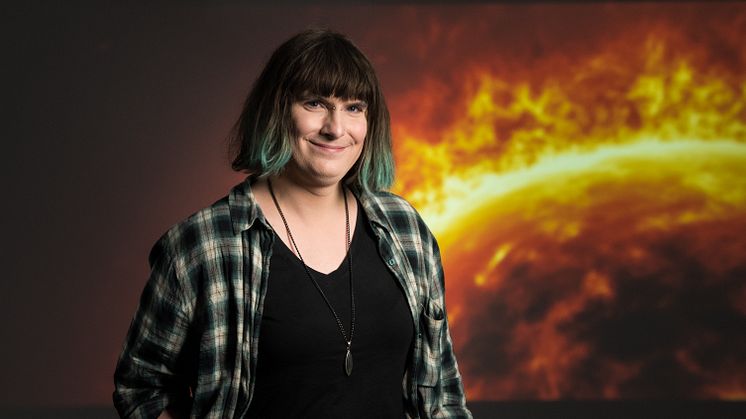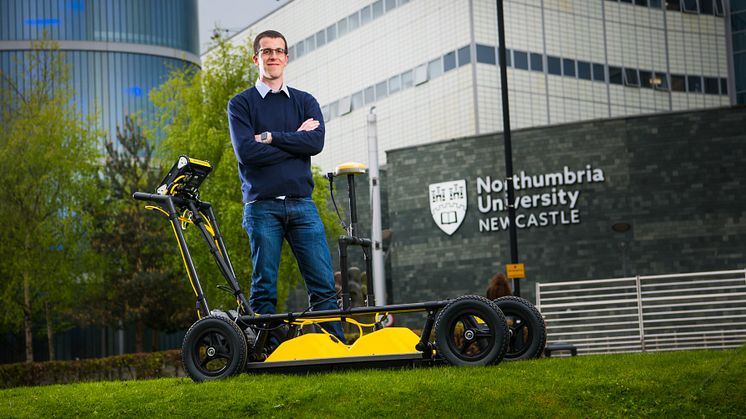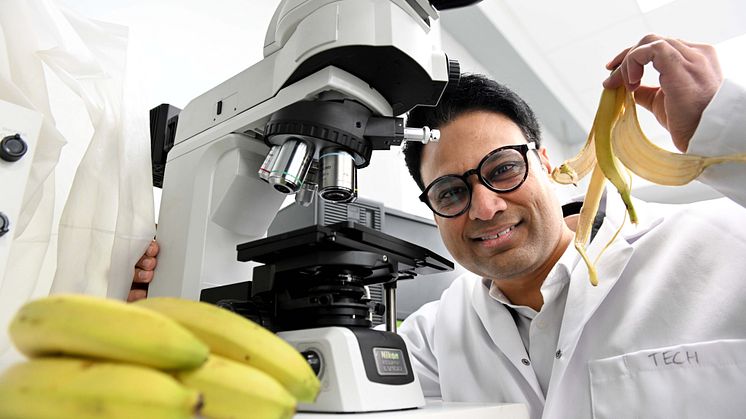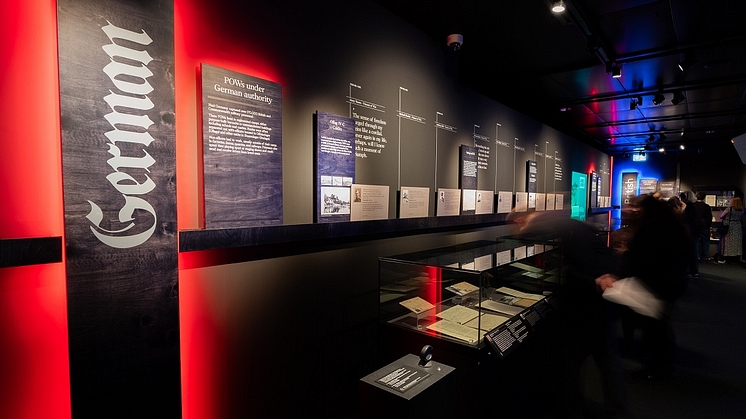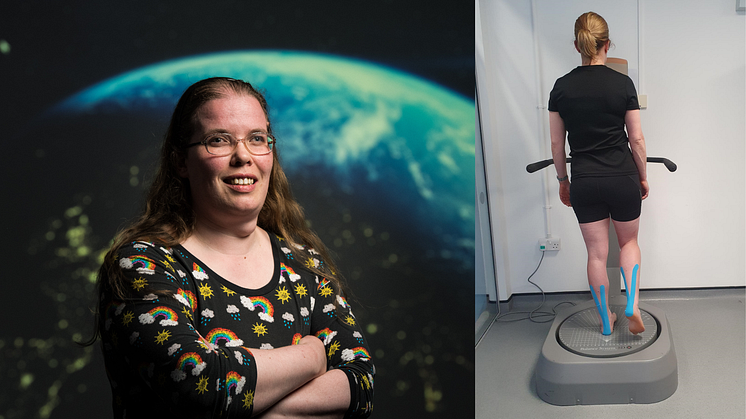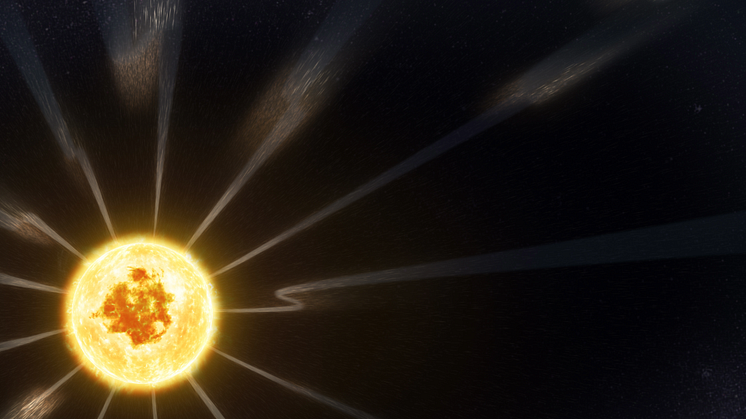
Press release -
Helping to uncover how the solar wind gets its energy
Since the 1960s, astronomers have wondered how the Sun’s supersonic “solar wind,” a stream of energetic particles that flows out into the Solar System, continues to receive energy once it leaves the Sun. Now, thanks to a fortunate line up of two spacecraft currently in space studying the Sun, they may have discovered the answer.
New research provides conclusive evidence that the fastest solar winds are powered by magnetic “switchbacks,” or large kinks in the magnetic field, near the Sun.
Solar wind describes the continuous outflow of charged plasma particles from the Sun into space. Travelling at speeds of up to hundreds of kilometres per second, when this wind interacts with Earth’s magnetic field it can result in the stunning aurora we know as the Northern Lights.
But when larger quantities of plasma are released, in the form of a coronal mass ejection, it can also be hazardous, causing significant damage to satellites and communications systems.
Despite decades of observations, how the solar wind gets its energy once it leaves the Sun was not well understood. But a team of international scientists, including Dr Julia Stawarz from Northumbria University, have now shared their findings in a paper published in the journal Science.
The research was led by the Smithsonian Astrophysical Observatory (SAO) which is part of Center for Astrophysics | Harvard & Smithsonian (CfA).
“Our study addresses a huge open question about how the solar wind is energised and helps us understand how the Sun affects its environment and, ultimately, the Earth,” said Yeimy Rivera of the CfA who co-led the study. “If this process happens in our local star, it’s highly likely that this powers winds from other stars across the Milky Way galaxy and beyond and could have implications for the habitability of exoplanets.”
Previously, NASA’s Parker Solar Probe found that these switchbacks were common throughout the solar wind. When Parker became the first craft to enter the Sun's magnetic atmosphere in 2021, scientists observed that switchbacks become more distinct and more powerful as Parker approached the atmosphere's outer edge. Up to now, however, scientists lacked experimental evidence that this interesting phenomenon actually deposits enough energy to be important in the solar wind.
“About three years ago, I was giving a talk about how fascinating these waves are,” said co-author Mike Stevens, also at the CfA. “At the end, an astronomy professor stood up and said, ‘that's neat, but do they actually matter?’”
To answer this, the team of scientists had to use two different spacecraft: Parker is built to fly through the Sun’s atmosphere, or “corona”. Scientists and engineers at the Smithsonian Astrophysical Observatory (SAO), partially built one of the key instruments aboard Parker. Meanwhile, ESA’s Solar Orbiter mission is also on an orbit that takes it relatively close to the Sun with complementary instruments onboard that measure the solar wind at larger distances.
This discovery was made possible because of a coincidental alignment in February 2022 that let both the Parker Solar Probe and Solar Orbiter measure the same solar wind stream within two days of each other. Solar Orbiter was almost halfway to the Sun while Parker was skirting the edge of the Sun's magnetic atmosphere.
“We didn't initially realize that Parker and Solar Orbiter were measuring the same thing at all. Parker saw this slower plasma near the Sun that was full of switchback waves, and then Solar Orbiter recorded a fast stream which had received heat and with very little wave activity,” said Samuel Badman of the CfA, the other co-lead of the study. “When we connected the two, that was a real eureka moment.”
Scientists have long known that energy is moved throughout the Sun’s corona and the solar wind, at least in part, through what are known as "Alfven waves.” These waves transport energy through a plasma, the superheated state of matter that makes up much of the Sun.
However, how much the Alfven waves evolve and interact with the solar wind between the Sun and Earth couldn't be measured until these two missions were sent closer to the Sun than ever before together. Now, scientists can directly determine how much energy is stored in the magnetic and velocity fluctuations of these waves near the corona and how much less energy is carried by the waves further from the Sun.
The new research shows that the Alfven waves in the form of switchbacks provide enough energy to account for the heating and acceleration documented in the faster stream of the solar wind as it flows away from the Sun. The knowledge is a crucial piece of the puzzle that will help scientists better forecast solar activity between the Sun and Earth as well as understanding how Sun-like stars and stellar winds operate everywhere.
Dr Julia Stawarz, Royal Society University Research Fellow in Northumbria University’s Solar and Space Physics research group, uses spacecraft observations to study plasma turbulence, magnetic reconnection, and related small-scale plasma processes across a variety of plasma environments in our solar system, including the solar wind.
In this research, Dr Stawarz worked with the team to assess the alignment of the two spacecraft and determine which tranche of data from each spacecraft corresponded to the same parcel of plasma. Dr Stawarzs’ expertise was also called upon in order to interpret how the fluctuations fit into the energy budget of the solar wind.
“This work really highlights the power of using the combined measurements from multiple space missions. In this study we were able to use these combined measurements to pin down how the energy in the solar wind was evolving over large distances as it expands into interplanetary space and, going forward, it will be exciting use these measurements to further explore how the processes responsible for converting the energy in the switchbacks into the heating and acceleration of the solar wind evolve,” explained Dr Stawarz.
“It took over half a century to confirm that Alfvenic wave acceleration and heating are important processes, and they happen in approximately the way we think they do,” said John Belcher, emeritus professor from the Massachusetts Institute of Technology who was not involved in this study. “This will be a classic paper and it helps fulfill one of the main goals of the Parker Solar Probe.”
The paper describing these results, titled ‘In situ observations of large amplitude Alfvén waves heating and accelerating the solar wind’, appears in the Volume 385, Issue 6712 of the journal Science and is available at http://www.science.org/doi/10.1126/science.adk6953
Northumbria University is powering the next generation of space innovation, attracting world-leading space academics across a multitude of specialist areas, from satellite communications to space law and policy.
Northumbria collaborates extensively with partners including UK Research and Innovation, the UK Space Agency, the UK Met Office, and over 40 other industrial partners.
Last year the University announced ambitious plans to develop a £50 million space skills, research and development centre, set to transform the UK space industry. The North East Space Skills and Technology centre (NESST) is expected to directly support the creation of over 350 jobs and inject over £260 million into the North East economy over the next 30 years, playing a critical role in the government’s levelling-up agenda and immediately becoming a catalyst for the wider development of the UK space sector in the North East region.
Discover more about how Northumbria University is powering the next generation of space innovation.
Adapted with thanks from the Smithsonian Astrophysical Observatory (SAO), part of Center for Astrophysics | Harvard & Smithsonian (CfA).
Image credit: Image background - NASA Goddard/CIL/Adriana Manrique Gutierrez, Spacecraft images - NASA/ESA
Image description of main image: Image depicting solar wind flowing from the Sun measured by Parker Solar Probe near the edge of the corona and later with Solar Orbiter at a larger distance during a spacecraft alignment. The solar wind contains magnetic switchbacks, or large amplitude magnetic waves, near Parker Solar Probe that disappear farther from the Sun where Solar Orbiter is located.
Topics
Categories
UNIVERSITY OF THE YEAR 2022 (Times Higher Education Awards)
Northumbria is a research-intensive university that unlocks potential for all, changing lives regionally, nationally and internationally.
Two thirds of Northumbria's undergraduate students come from the North East region and go into employment in the region when they graduate, demonstrating Northumbria's significant contribution to social mobility and levelling up in the North East of England.
Find out more about us at www.northumbria.ac.uk
--- Please contact media.communications@northumbria.ac.uk with any media enquiries or interview requests ---
